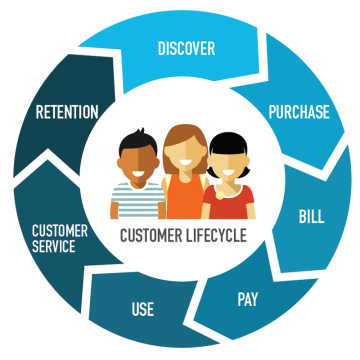The readers of this blog already know that customer care is a malleable and ever-evolving concept, prone to major differences from one region to the next, and even from one customer’s household to the next. Instead of trying to cover the entire spectrum of customer care, I’m going to focus on one of the major aspects that every Tier 1 operator considers vital to the overall care experience: the call centre.
But First… An Anecdote on Customer Care
I remember 20 years ago helping my Opa with a computer issue over the phone. He had somehow adjusted the settings in Microsoft Word so that all the font symbol icons he used while translating documents from English to Swedish or German had “magically” disappeared. Being technically minded, I was by inference the expert in restoring the missing menu bar back to Microsoft Word.
Now this was pre-YouTube, and how-to blogs weren’t widely available, so I couldn’t just direct him to a website or video.
After spending about half an hour maintaining my composure while saying the same thing over and over again (“right click–>view–>toolbar”), I finally gave up. I ended up driving for 20 minutes to his house and was able to fix the problem in approximately three seconds. There was an obligatory tea, cookies, and random story of days gone by, but I’m sure there is the truck-roll equivalent to that as well. Come to think of it, I was the truck roll.
Why does this story relate to improving customer care? The example with my Opa highlights some important truths: some customers are less tech savvy than others, some have greater levels of urgency than others, and some just want to figuratively trick you over to their house for a cup of tea and some small talk.
These customer behaviours can greatly influence the conversation about customer experiences while resolving an issue. This is exactly what we’ve learned while working with Tier 1 partners on projects to improve customer care.
What We’ve Learned with Tier 1 Partners
When talking to Tier 1 service providers, what starts off as a simple question on customer care and customer experiences quickly expands into interesting discussions. The conversation shifts from what seems like an expected response on reliability in the outside plant, to a subscriber-centric conversation that focuses on the relationship between the service provided and the expected value of what is delivered. As soon as there is any disparity between the expected services a customer signs up for and what is delivered, there is a chance that the customer feels taken advantage of, or cheated. This greatly increases the risk of churn.
Before we look at how we can prevent customer churn, let’s explore the common interactions between service providers and their subscribers.
Customer Experience Influencers

We often discuss diminishing average revenue per unit (ARPU) in direct contrast with what is referred to in this decade as the ‘age of retention.’ The image above represents a customer lifecycle from the operator’s perspective, from the discovery efforts, to the use of available services, customer call center expectations, and retention tactics. This lifecycle is broken into seven distinct categories, each representing an aspect of the customer experience:
- Use – Once a subscriber has broadband services initialized, most of this category is driven beyond the commodity of a simple internet connection. This category includes the customer connection, not in terms of speed, but as to whether the gateway/modem has service and is functioning properly. A major portion of the customer experience is based on this factor alone.
- Purchase – This category covers the customer interactions driving customer experiences during the purchasing of the services. Major influencers of this category range from sales representative interactions, installation processes, and ultimately, the quality of the Internet service that is promoted.
- Discover – This category covers the customer experiences as they learn about available services and determine how it impacts their decision to acquire services, including promotions, website UX, and community influences.
- Bill and Pay – These tightly integrated categories seem relatively obvious and not somewhere that one would expect a challenge, however, in March of 2017 a major service provider was hit in social media over discrepancies on customers’ bills. After a week of disruption, the CSP admitted to surcharge errors and had to issue refunds to some of their customers. Billing accuracy is clearly a vital piece of the puzzle.
- Customer Service and Retention – What keeps the customer loyal? This seems to be a relatively obvious answer: the customer signs up to purchase a specific set or package of services, and if they receive that set or package, then they are satisfied. However, if they receive services that are less than what they signed up for, they will do something about it — whether that means communicating the frustration with the service provider’s call center, or finding a different provider who has an attractive promotion. Network quality and Internet quality are major influences in these two categories.
Customer Service and Retention are the most vital aspects when attempting to minimize churn and improve the quality of experience for subscribers on a network, and they are heavily influenced by interactions with the customer call centre.
Stay tuned to this series as we go in reverse order of the customer lifecycle to discover how operators are enhancing customer care practices in each of these essential stages.
Starting off in my next blog, we’ll take a deep dive into Customer Service and Retention, two of the most vital aspects when attempting to minimize churn and improve the quality of experience (QoE) for subscribers on a network. I’ll describe how interactions with the customer call center can heavily influence these stages of the customer lifecycle, and how a call center solution was developed in partnership with Tier 1 providers to simplify operations and improve customer experiences.



Submit a Comment